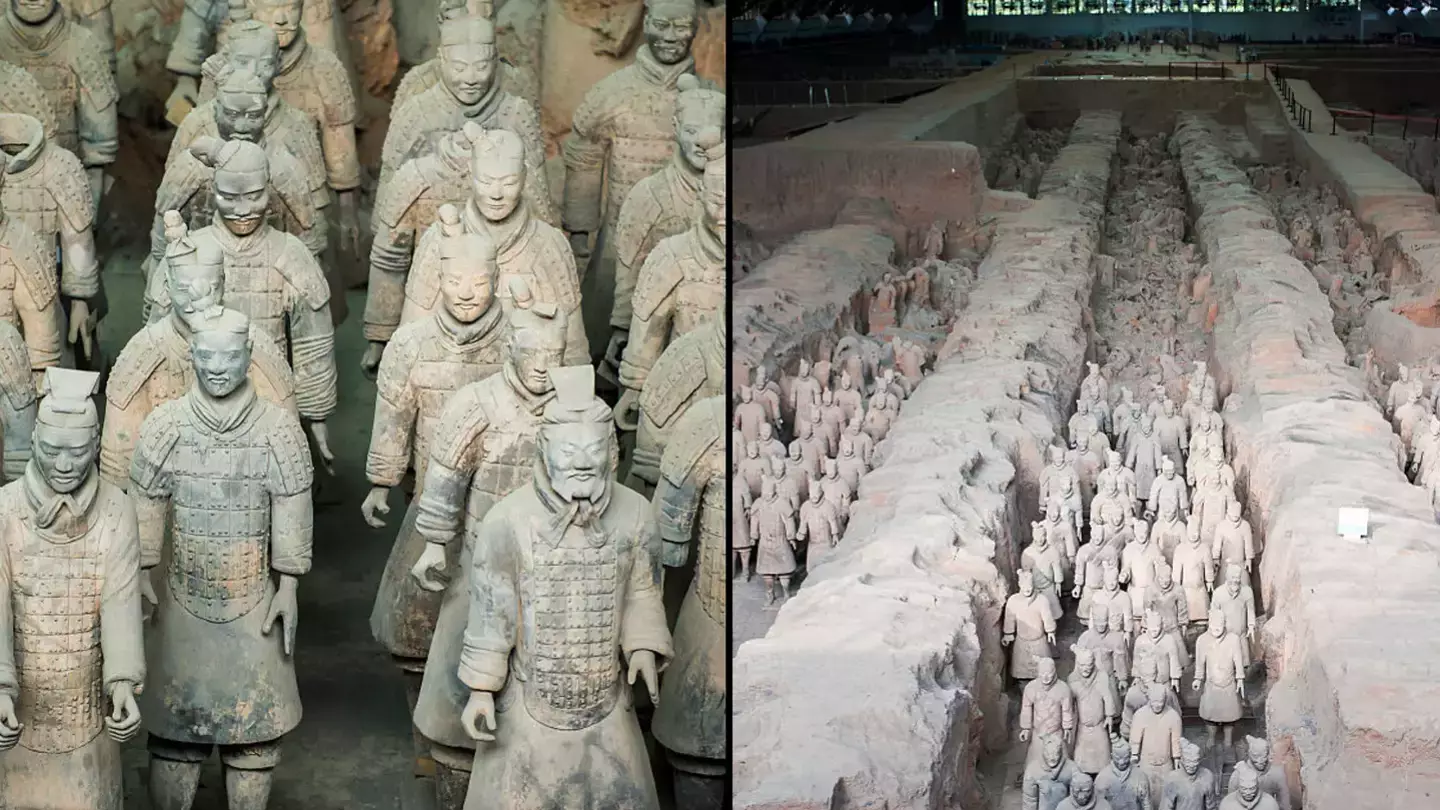
Situated in the Shaanxi Province of China, the burial site of Qin Shi Huang and its famous Terracotta Army was completed after he ascended the throne in 208 BCE and creating a unified China – however, the site was later lost to history until 1974 by local farmers.
One of the most influential figures on Chinese history, Qin Shi Huang was responsible for creating the country’s most recognised landmark, the Great Wall of China, as well as implementing a standardised writing system and creating roads across the vast country to improve transportation.
However, his mausoleum and a tremendous Terracotta Army remain one of his most mysterious creations – with an estimated 6,000 statues still underground in one of the three burial pits, according to the National Museums Liverpool.
.jpg)
Following the 1974 discovery archeologists began to excavate the site and were amazed by their findings.
In three separate pits stood an estimated 8,000 soldiers, 130 chariots with 520 horses, and 150 cavalry horses, believed to be modelled off of the emperor’s real life army of the time.
Various non-combat figures have also been uncovered at the sight, including artists, acrobats and musicians. The statues would also have been painted with bright colours at the time, although most of this has since been lost to the elements.
Why was the Terracotta Army and mausoleum constructed?
While the tomb of Qin Shi Huang and its surrounding army might seem a little over the top for modern times, the simple answer is well, why not?
As the first emperor of China, Qin Shi Huang would have wanted his legacy to be remembered long after his demise, hence the reason for building such as a grandiose final resting place. It’s also believed the Terracotta Army was built with the purpose of protecting him in the afterlife.
After all, you don’t conquer six warring states without making at least one enemy.
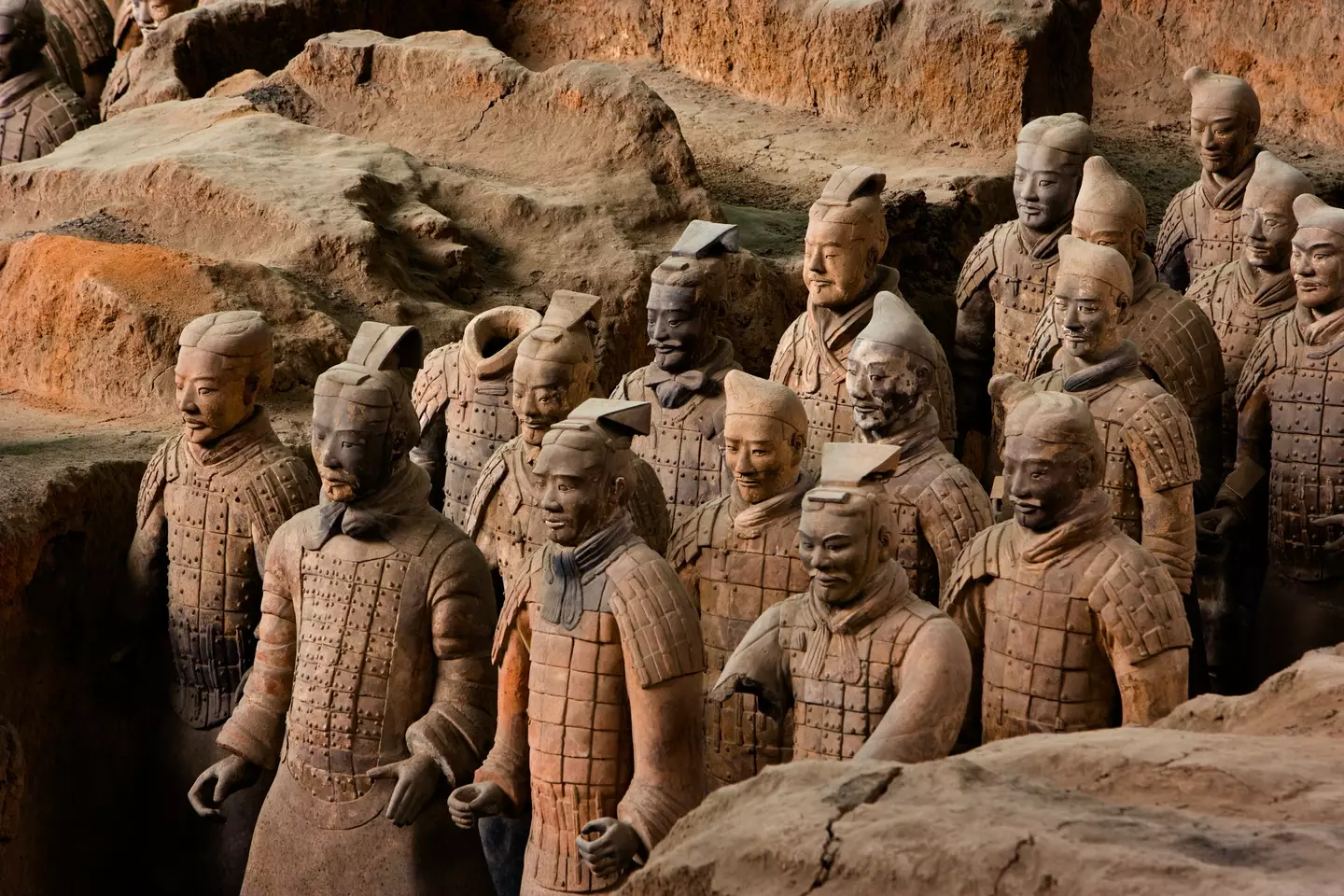
Faded colour details seen on soldiers in the Terracotta Army (Getty Stock Images)
Why is the mausoleum of Qin Shi Huang unopened?
Considering the splendour of the Terracotta Army, you’d think that archaeologists would be racing to break open the tomb and discover what further wonders are inside – which makes their hesitance to enter all the more interesting.
This is partially down to practical reasons, with archaeologists not wanting to cause any damage to the structure as a whole.
There is also the fact that the tomb is said to contain various booby-traps laid throughout for protection, with no one wanting to find themselves on the receiving end of a 2,234-year-old trap.
According to a 2020 study, the tomb also contains high levels of mercury due to the emperor’s supposed obsession with the substance, which he believed would grant him eternal life. Thus, anyone entering the tomb is also at risk of possible health complications.
So until a more delicate and advanced method of excavating the tomb can be found, the tomb of Qin Shi Huang will remain one of history’s greatest mysteries.
The doc, from British director James Tovell, looks into the history of the tomb, which belongs to Qin Shi Huang.

The figures are known as the terracotta warriors. (Charle He/Getty Images)
The discovery of the tomb is one of the biggest archaeological findings in modern history.
Expeditions have been hugely fruitful for excavators so far, with previous trips leading to hundreds of figures – known as terracotta warriors – being found inside.
The collection, also referred to as the Terracotta Army, were buried alongside Qin Shi Huang to protect him in the afterlife.
The figures are believed to represent solders, officials and musicians.
While archaeologists aren’t worried about a ‘curse’ – despite long-standing rumours relating to the consequences of opening other tombs – experts fear disturbing the burial site could damage what’s inside.
When the Terracotta Army were discovered, scientists noticed that the change in atmosphere resulted in the paint used on the statues peeling off.
For this reason, they are waiting to discover ways to open the tomb in a more controlled way.
A documentary about the tomb, called Mysteries of the Terracotta Warriors, hit Netflix on 12 June.
It delves into the excavation so far as well as the rise and fall of the Qin dynasty.
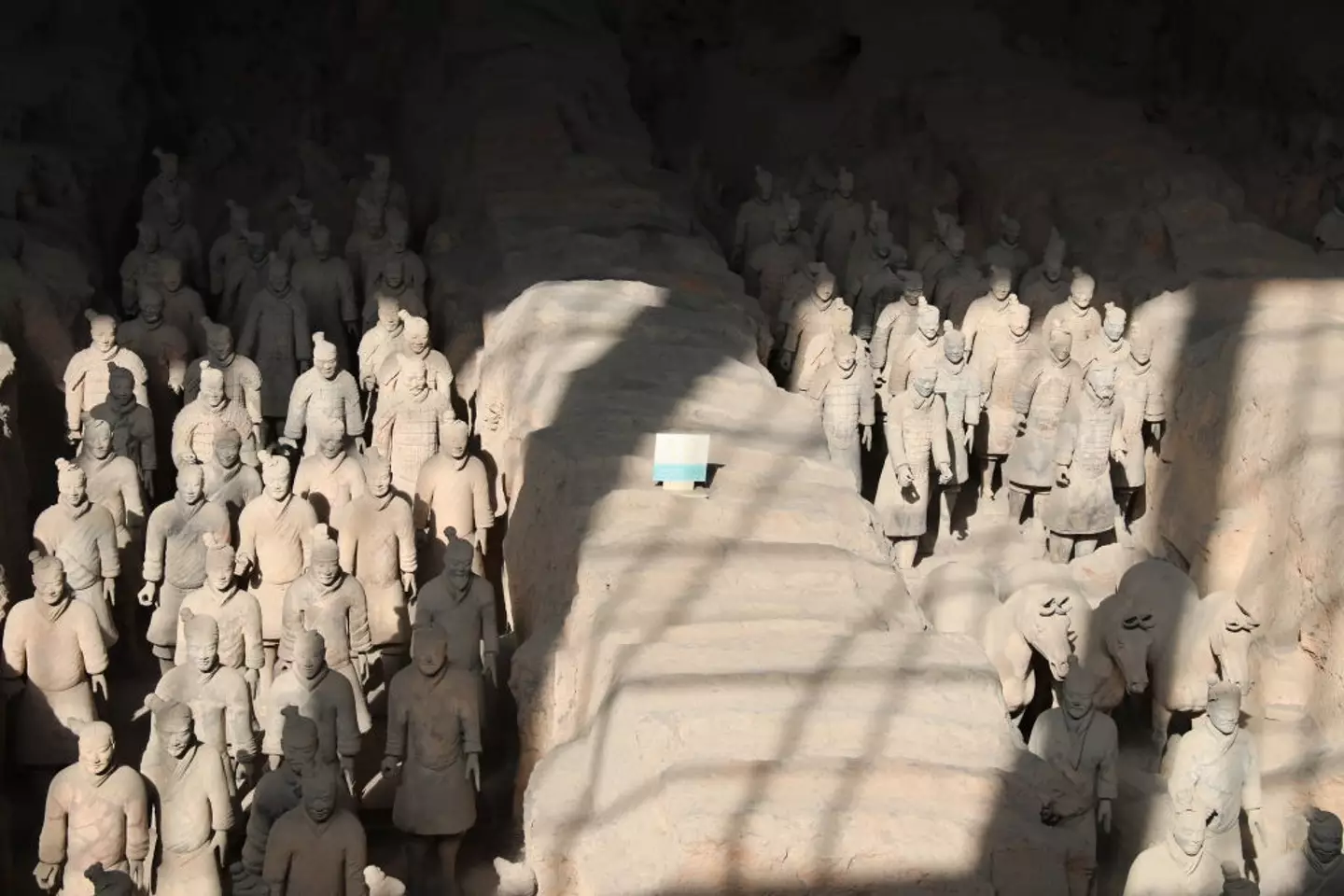
There’s one area that remains unopened. (Charle He/Getty Images)
And it seems viewers have been hooked on the doc, with one writing on X: “The show ‘Mysteries of the Terracotta Warriors‘ on @Netflix is a must watch.”
“If you have a little bit interest to know about the fall of Qin dynasty and how these warriors were smashed, you must watch this show.”
While another said: “Mysteries of the Terracotta Warriors was a really good docudrama. Highlighting the excellent work archaeologists do for years and how important it is to support our historical knowledge with evidence. On Netflix now.”
And a third added: “Mysteries of the Terracotta Warriors on Netflix is some interesting cool a** history. 8000 unique carved warriors underground.”
Meanwhile a fourth said: “Mysteries of the #Terracotta Warriors Netflix, anytime I see anything about this fascinating part of history I’m always left with the question WHEN are they going to open the Emperor’s tomb??
“This has to be the greatest archaeology curiosity in the World, there’s no close second.”
You can watch Mysteries of the Terracotta Warriors on Netflix now.
In August, 2005, Greece was devastated when Helios Airways Flight 522 crashed into a mountainside just north of Athens – killing 115 passengers and six crew members onboard.
The plane had departed from Larnaca in Cyprus just after 9am on 14 August and was destined for Prague, via a quick stopover in Athens.
However ground crew in the Greek capital would be left baffled after their radio calls to Flight 522 went unanswered. The aircraft was last heard from shortly after departing Larnaca airport when the pilots reported an air conditioning warning to ground staff.
Fighter jets were then scrambled after air traffic control staff after they were unable to get in contact with the pilots amid concerns of a hijacking or terrorism incident.
But what they’d find was arguably even more chilling.
.jpg)
The aircraft crashed near the village of Grammatiko (LOUISA GOULIAMAKI/AFP via Getty Images)
After locating Flight 522 circling aimlessly above Athens, fighter pilots noted the first officer slumped in his seat at the controls, while the captain’s seat was left vacant. Inside the cabin, passengers were unconscious, despite oxygen masks dangling in-front of them.
The fighter jet pilots were helpless to watch on as the ‘ghost flight’ flew aimlessly around in the sky, well aware of the impending disaster which awaited.
All passengers and crew onboard the flight were alive, but unconscious, with the exception of flight attendant Andreas Prodromou who was awake and desperately attempting to steer the plane to safety. While a qualified pilot, Prodromou had no experience with flying the Boeing 737-31S plane and was unable to prevent the flight’s final destination.
Just under three hours after take off Flight 522’s engines failed within 10 minutes of each other and Prodromou pointed weakly down to the fighter pilots, who were helpless to watch as the aircraft slammed into a hillside near the village of Grammatiko.
.png)
The incident was caused by a loss in cabin pressure (Milos Bicanski/Getty Images)
The devastated words of one of the fighter jets who witnessed the crash would later resurface online.
In the audio, which is between the pilot and crew on the ground, the pilot can be heard saying: “Mayday, mayday. Mambo, we have a civilian plane crash. We have a civilian plane crash. Mayday, mayday.
“Mayday, mayday. Athens, the civilian plane crashed to a mountain peak.”
It was later theorised that the aircraft’s cabin pressurisation switch had been left in ‘manual’ rather than ‘auto’ – leading to the depressurisation as the flight climbed into the sky.
Families of the victims would later file a lawsuit against Boeing in 2007, which was later settled out of court. Meanwhile six former Helios Airways employees were charged with manslaughter by a Greek court in 2008, but the case was ultimately dismissed in 2011.
Helios Airways would cease operations in 2006.
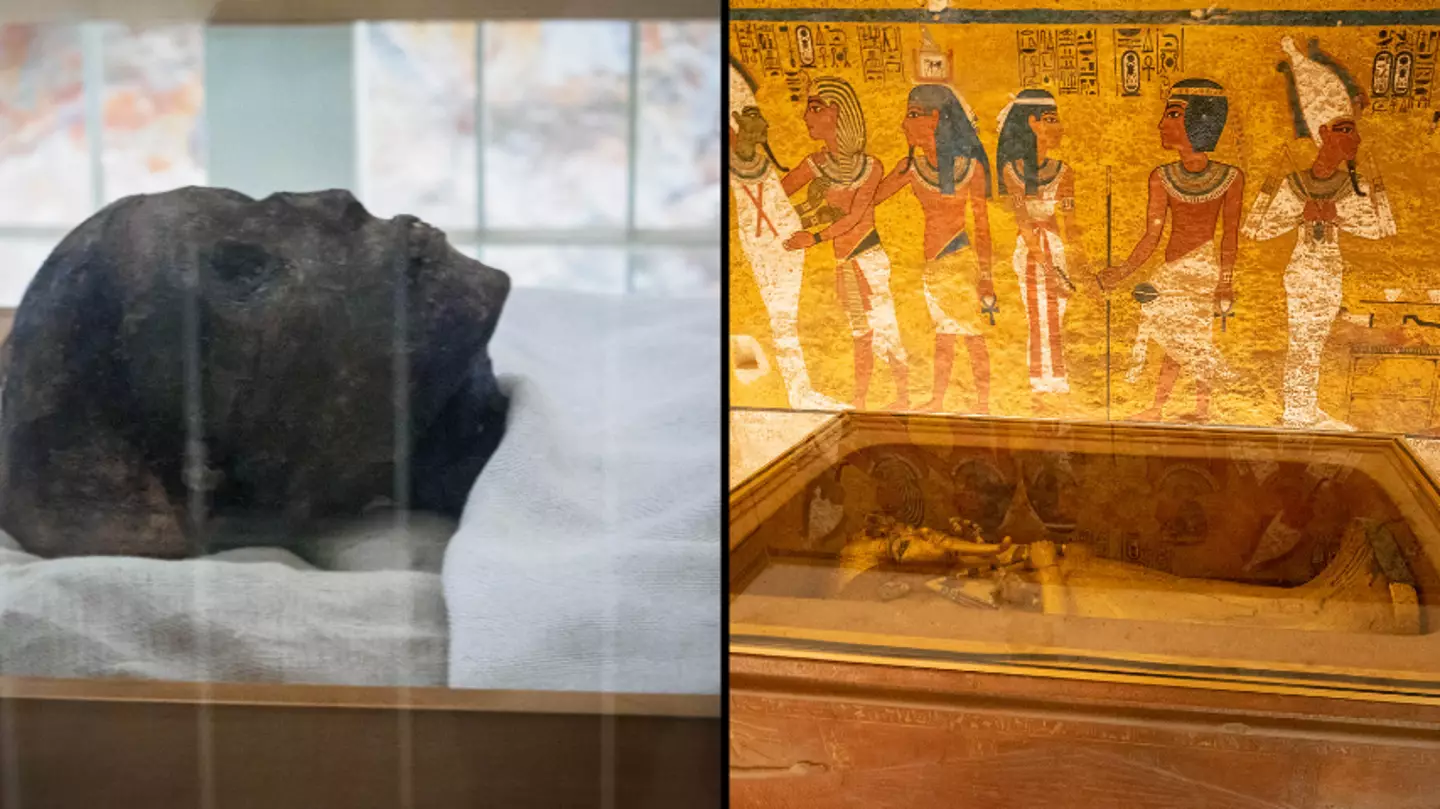
Known as the ‘Pharaoh’s curse’, it all started back in 1922, when 20 people opened the tomb.
It’s something that has been written about in ancient Egyptian texts, where those who disturbed the mummified remains would suffer ‘death by a disease that no doctor can diagnose’.
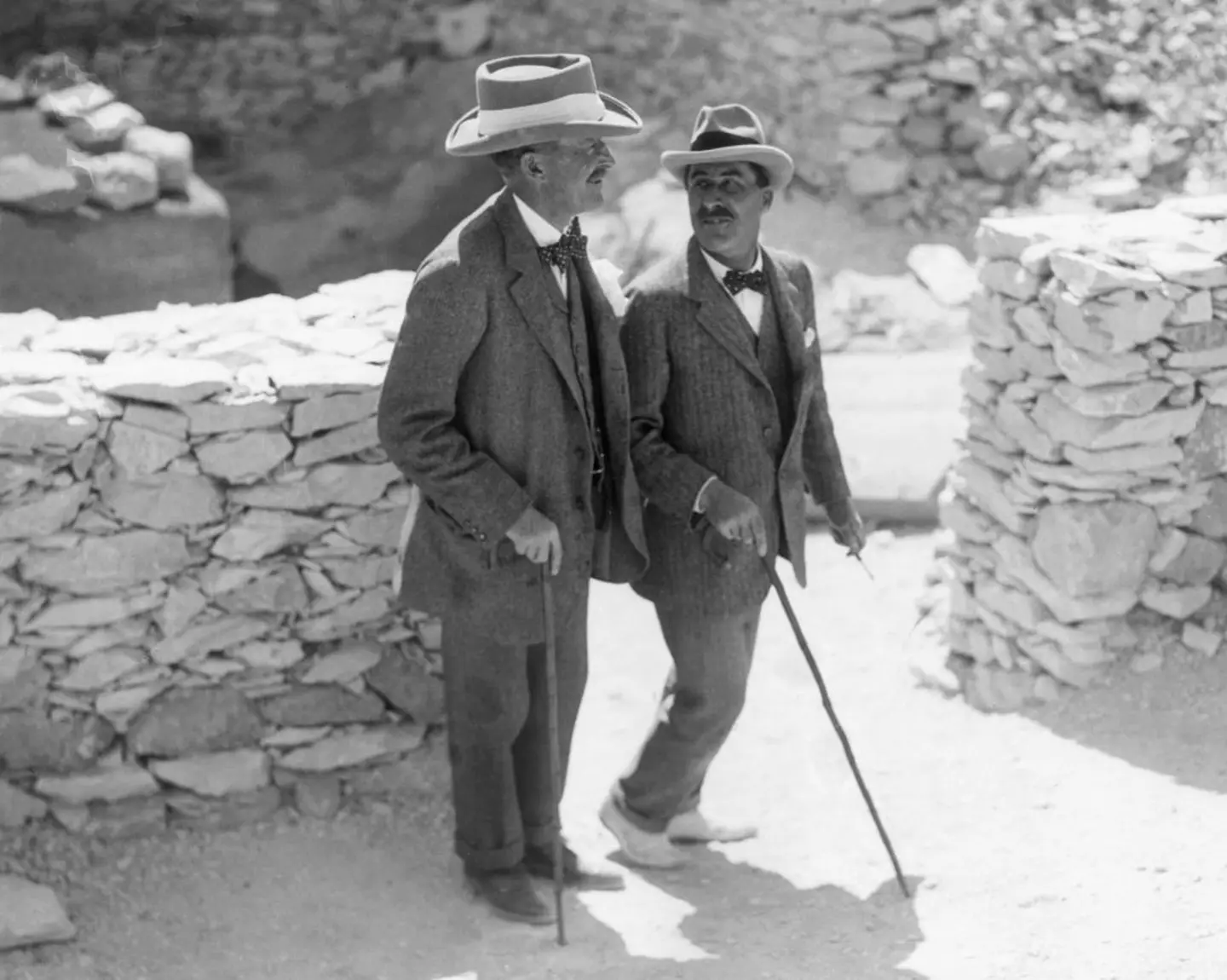
Howard Carter and Lord Carnarvon during the excavation (Hulton Archive/Getty Images)
However, despite the very eery warnings, a new study, written by Ross Fellowes in the Journal of Scientific Exploration, could have found the answer to what really happened over 100 years ago.
It’s believed that the cause of the deaths resulted from radiation poisoning from natural elements containing uranium and toxic waste.
Exposure to these can lead to cancers, one of which took the life of an archaeologist named Howard Carter, who was the first person to enter Tutankhamun’s tomb in 1922.
Carter passed away 11 years later after battling Hodgkin’s Lymphoma – a cancer which has been linked to radiation poisoning.
Other people who entered the tomb include Lord Carnarvon, who died from blood poisoning five later.
Others who entered have died in their fifties, of medical conditions including asphyxia, stroke, diabetes, heart failure, pneumonia, poisoning, malaria and X-ray exposure.
But the radiation isn’t limited to the tomb, with Fellowes explaining that high levels of radiation have been found throughout sites in Egypt.
“Radiation has been detected by the Geiger counter at two sites at Giza adjacent to the pyramids,” he wrote.
It’s believed the ancient Egyptians were aware of the toxins, with Fellowes adding: “The nature of the curse was explicitly inscribed on some tombs, with one translated presciently as, ‘they that break this tomb shall meet death by a disease that no doctor can diagnose.'”
There were other peculiar events that happened once the tomb was opened.
Apparently, according to National Geographic, Cairo experienced a power outage and a sandstorm.
Meanwhile, Carnarvon’s dog is reported to have howled before suddenly dropping dead.
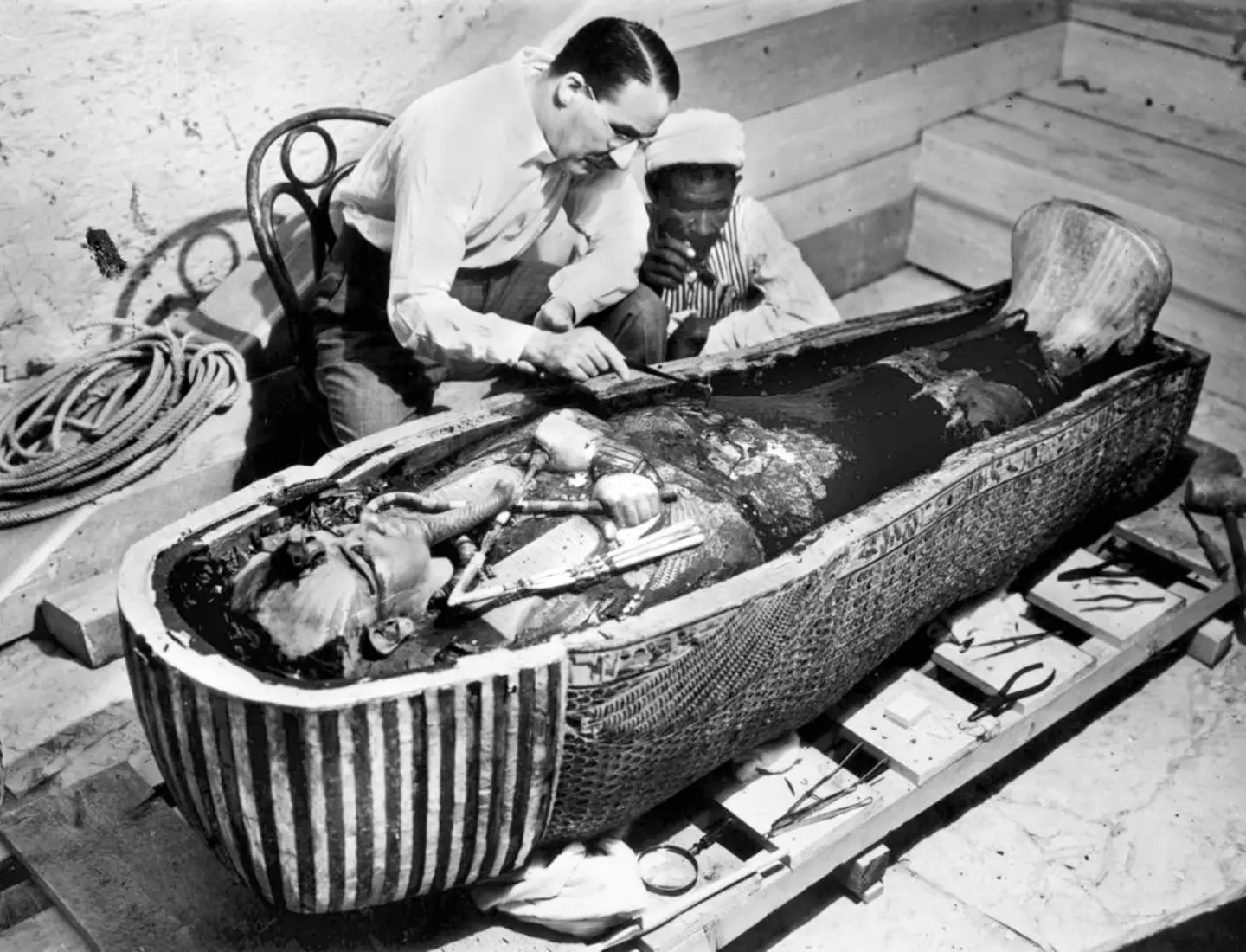
Carter passed away 11 years later after battling Hodgkin’s Lymphoma (Apic/Getty Images)
Tutankhamun is one of the most famous of the Ancient Egyptian kings.
He took the throne at the age of nine and ruled the empire until he was 18, when he died.
According to studies, scientists believe that it’s most likely to have been from a broken leg.
A popular theory was that he died from a blow to the head, but this was later disproved following a CT scan of his body.
On 27 March 1977 aviation history would change forever when two planes collided on the runway at Tenerife’s Los Rodeos Airport (now called Tenerife North) and killed 583 out of the 644 people onboard both aircraft.
Following a terrorist attack at an airport in Gran Canaria, all flights bound for the island were re-routed to the much smaller Los Rodeos – causing the airport to swiftly become overwhelmed.
The diversion, coupled with poor weather conditions and a miscommunication between air traffic control and the pilots of KLM Flight 4805, led to disaster when the KLM flight attempted to take off and subsequently slammed into the side of Pan Am Flight 1736 which had been travelling along the runway at the time.
.png)
A devastating chain of events would lead to the crash (CBS / Youtube)
The collision would kill all 248 onboard the KLM while just 61 of the 396 passengers and crew on the Pan Am would survive. The crash remains the deadliest air accident in aviation history, with a final death toll of 583.
One of the 61 lucky souls to survive the crash onboard the Pan Am was Joani Feathers, who was travelling to the Canary Islands for a Mediterranean cruise with her boyfriend at the time.
Feathers recalled being anxious about the proximity of the KLM plane that afternoon, recalling in an interview with The Daytona Beach Journal how she voiced her concerns to then boyfriend Jack Ridout.
His response would be a chilling omen of what was to come.
.png)
Joani Feathers and her boyfriend were among the 61 survivors (CBS/Youtube)
“Don’t worry. If he hits us, you won’t feel a thing,” he told her.
After declining an invitation to enjoy a drink in the upstairs lounge, Joani buckled her seatbelt and waited for the KLM to clear the runway.
Just moments later she would find herself sat in a cabin which had been torn apart by the KLM, with the upstairs bar they’d been invited to completely gone.
Both she and Jack were injured, but alive – with the couple now left to navigate escaping from the wreckage.
The aftermath of the crash was horrific, with Joani recalling seeing one woman ‘cut in half’ by her seatbelt while another woman with curlers in her hair was on fire.
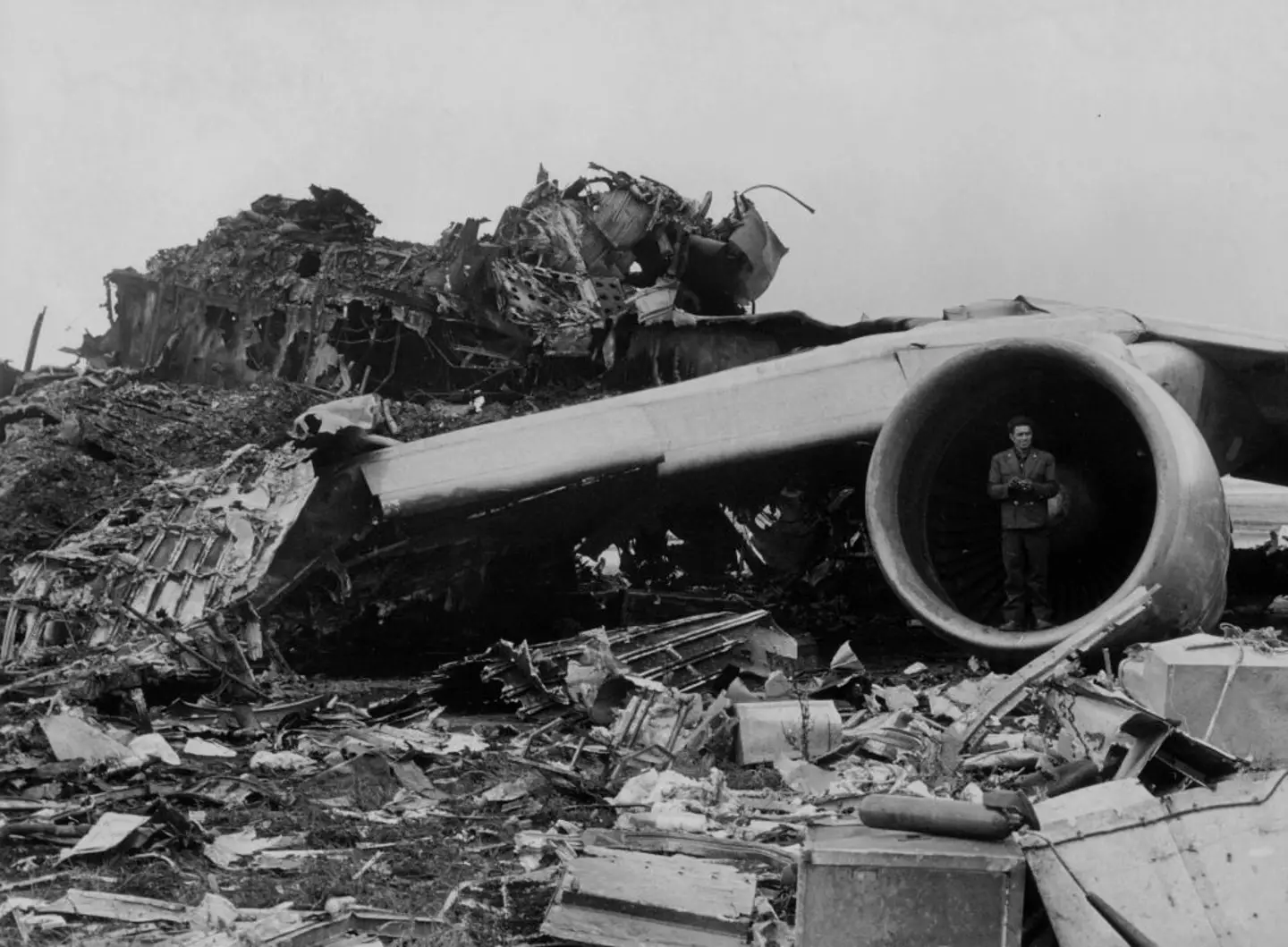
583 people would lose their lives in the crash (Central Press/Getty Images)
Leaning on survival skills picked up from her years working in law enforcement, Joani and her boyfriend scrambled to make their way off the destroyed airliner. Joani made it off the plane and sprinted as far away as she could while her boyfriend stayed behind to help an air stewardess deploy an escape raft. He would later flee for his life after a subsequent explosion decapitated the woman.
Joani recalled then seeing the plane explode like an ‘atom bomb’ before she and her boyfriend were taken to hospital, where she was able to make contact with her mother.
Joani has flown multiple times in the years since the crash, however the disaster is never far from her thoughts.
“It’s always on my mind when I get on a plane,” she said.


